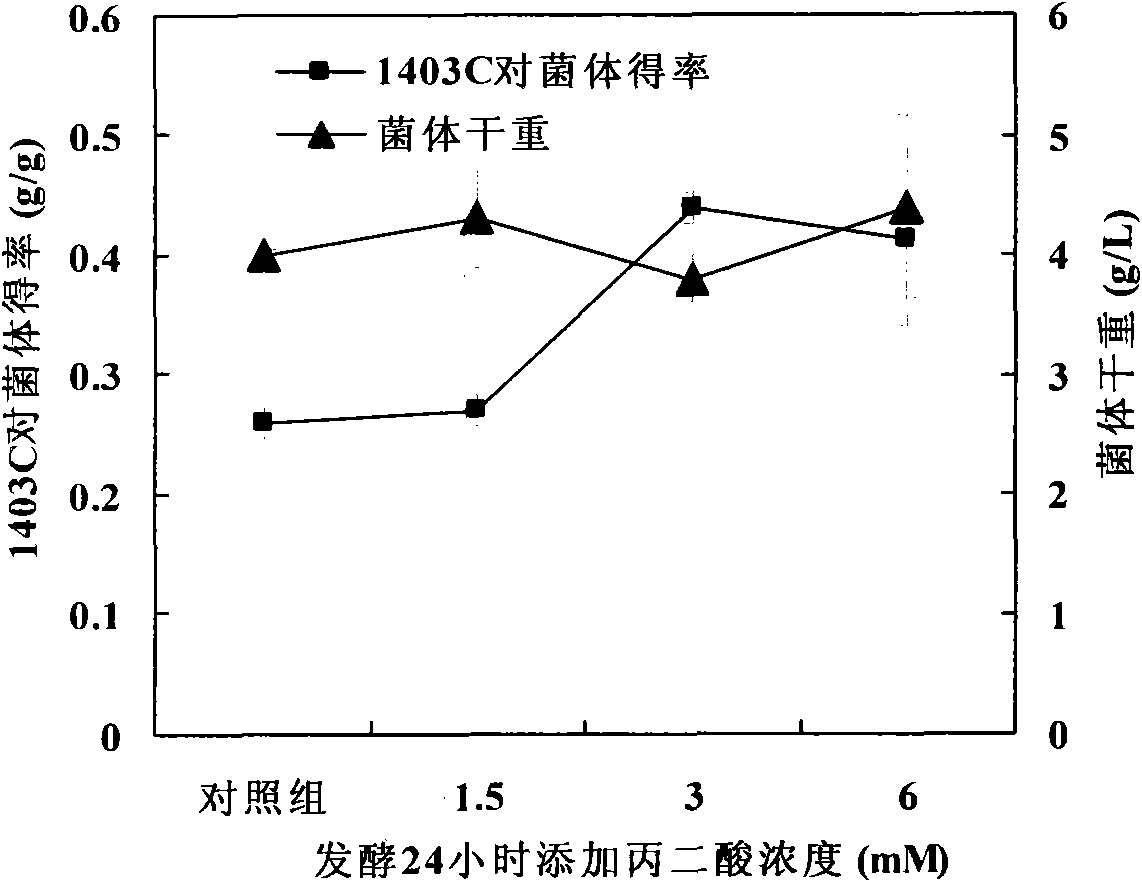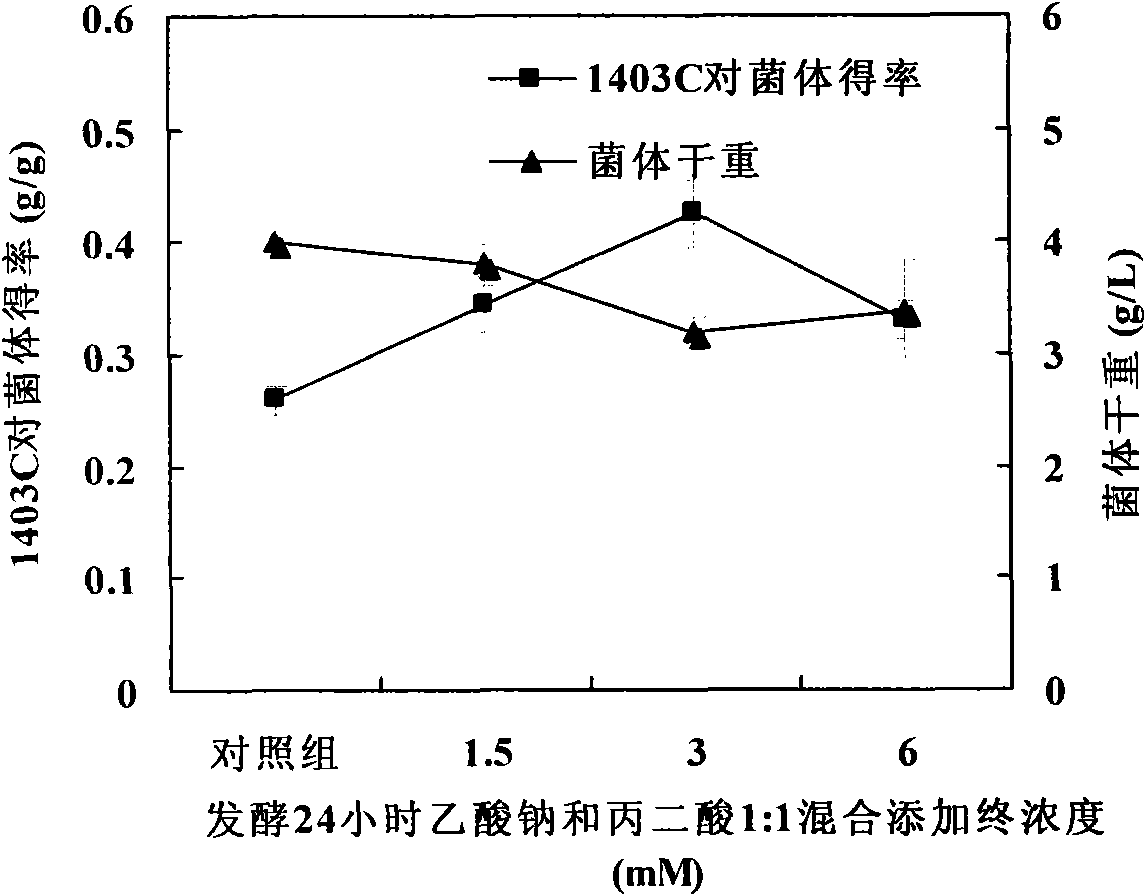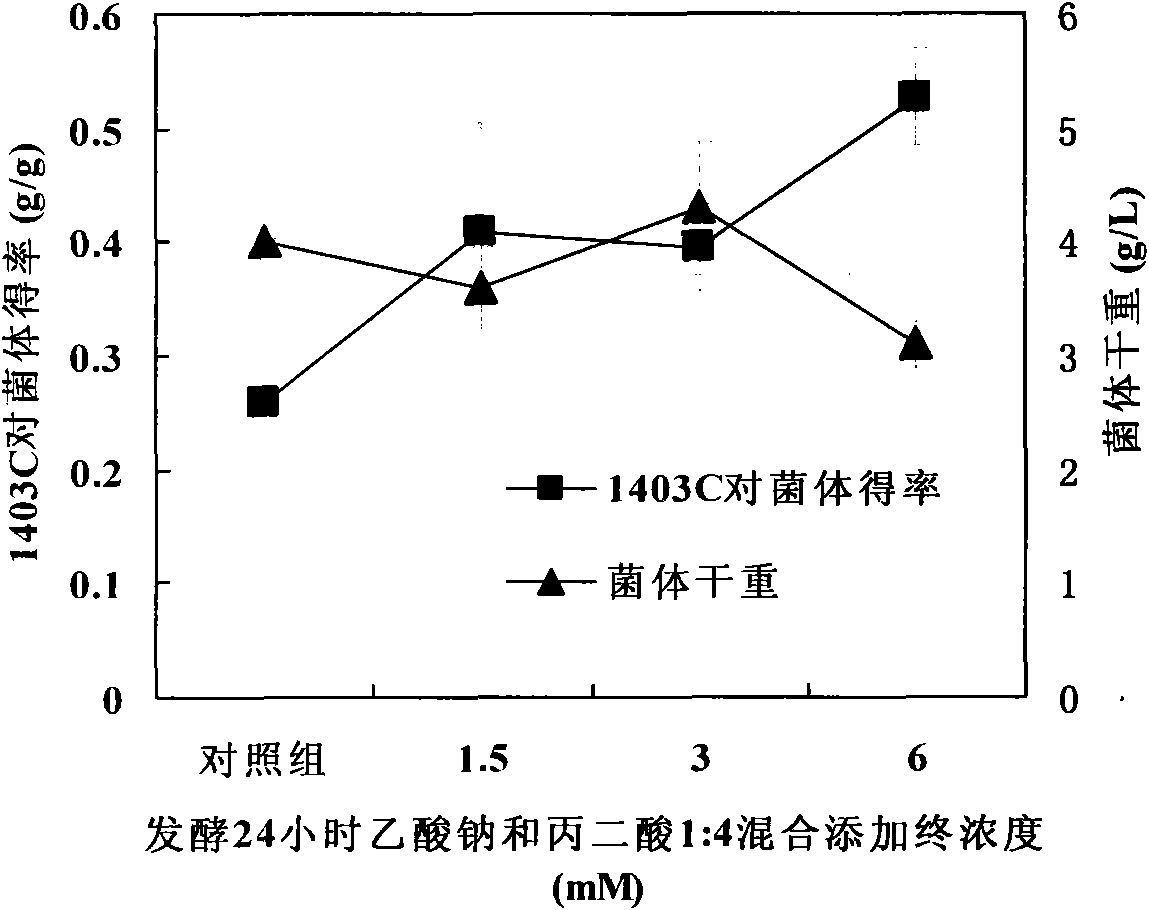Method for improving output of anticancer anthraquinone compound 1403C generated by Fusarium proliferatum No.1403
A technology of endophytic fungi and anthraquinones, applied in the field of metabolic regulation, can solve the problems of difficulties in pharmacological and drug efficacy research, low yield of 1403C, etc., and achieve the effect of increasing yield
- Summary
- Abstract
- Description
- Claims
- Application Information
AI Technical Summary
Problems solved by technology
Method used
Image
Examples
Embodiment 1
[0038] The influence of embodiment 1 malonate on thallus growth and 1403C synthesis
[0039] Add different concentrations of malonate to the fermentation broth, the initial addition time is 24 hours, and the final concentrations are 1.5mM, 3mM, 6mM respectively
[0040] The result is as figure 1 As shown, when the final concentration of malonic acid in the fermentation broth reached 1.5, 3, and 6 mM, the growth of the bacteria had no obvious effect on the growth of the control group, but the yield of the product 1403C on the bacteria increased by 3.8%, 68.8% compared with the control, respectively. %, 59.2%, indicating that the addition of malonate during 24 hours of fermentation has a great stimulating effect on the production of product 1403C.
Embodiment 2
[0041] Example 2 The effect of adding sodium acetate and malonic acid on the growth of bacteria and the synthesis of 1403C after mixing according to the molar ratio of 1:1
[0042] Add a mixture of sodium acetate and malonic acid with a molar ratio of 1:1 to the fermentation broth. The initial addition time is 24 hours, and the final concentrations of the mixture in the fermentation broth are 1.5mM, 3mM, and 6mM, respectively.
[0043] The result is as figure 2As shown, when the final concentration of the mixture of sodium acetate and malonic acid in the fermentation broth reached 1.5, 3, and 6mM, the dry weight of the bacteria was 3.8, 3.2, and 3.4g / L, which was slightly lower than the 4.0g / L of the control group. , but the yields of 1403C to bacteria were 0.35, 0.43, and 0.33g / g DCW, respectively, which were 32.7%, 63.5%, and 26.9% higher than the 0.26g / g DCW of the control group, indicating that the molar ratio of 24 hours of fermentation was The 1:1 sodium acetate and ma...
Embodiment 3
[0044] Example 3 Sodium acetate and malonic acid are mixed according to the molar ratio of 1:4 and then added to the effect on the growth of bacteria and the synthesis of 1403C
[0045] Add a mixture of sodium acetate and malonic acid with a molar ratio of 1:4 to the fermentation broth. The initial addition time is 24 hours, and the final concentrations of addition are 1.5mM, 3mM, and 6mM respectively.
[0046] The result is as image 3 As shown, when the final concentration of the mixture of sodium acetate and malonic acid in the fermentation broth reaches 1.5, 3, and 6mM, the dry weight of the bacteria is 3.6, 4.3, and 3.1g / L, which fluctuates around 4.0g / L in the control group. , but the yields of 1403C to bacteria were 0.41, 0.40, and 0.53g / g DCW, respectively, which were 57.3%, 52.3%, and 102.7% higher than the 0.26g / gDCW of the control group, indicating that the molar ratio of 1 : Sodium acetate and malonic acid of 4 have a great stimulating effect on the generation of ...
PUM
 Login to View More
Login to View More Abstract
Description
Claims
Application Information
 Login to View More
Login to View More - R&D
- Intellectual Property
- Life Sciences
- Materials
- Tech Scout
- Unparalleled Data Quality
- Higher Quality Content
- 60% Fewer Hallucinations
Browse by: Latest US Patents, China's latest patents, Technical Efficacy Thesaurus, Application Domain, Technology Topic, Popular Technical Reports.
© 2025 PatSnap. All rights reserved.Legal|Privacy policy|Modern Slavery Act Transparency Statement|Sitemap|About US| Contact US: help@patsnap.com



